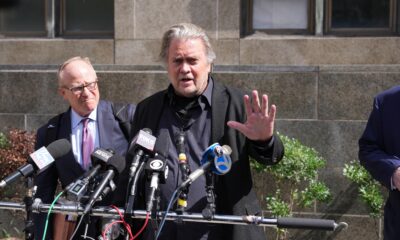Catholic Students Kicked Out Of Smithsonian Over Pro-Life Hats

A group of Catholic school students were kicked out of the Smithsonian National Air and Space Museum on January 20 for wearing beanies that had a pro-life message on them.
The parents of the students — who were from Our Lady of the Rosary School in Greenville County, South Carolina — are now being represented in a lawsuit by the American Center of Law and Justice (ACLJ).
Speaking with WYFF-TV, an attorney for the ACLJ reported that a dozen students from the Catholic school had tried to visit the museum after attending the annual March for Life — a massive pro-life demonstration that takes place in Washington, D.C. on the anniversary of the Supreme Court’s 1973 Roe v. Wade ruling.
A mother of one of the students posted on Twitter with details about the children being kicked out of the museum, revealing that her daughter had told the security guard that they were wearing the hats to be able to identify each other in the crowd at the museum.
The children state that a security guard approached them, telling them to either remove the pro-life beanies or leave the museum. When questioned about the reason behind his warning, the security guard reportedly told the group that the museum was a “neutral zone.”
Nora Luz Kriegel, a parent of students at Our Lady of the Rosary School, joined a group in writing a letter to the museum telling them to change their policy.
“They should be allowed to wear the hats that they were wearing and to be able to express themselves,” Kriegel told WYFF-TV. “And I felt it was very wrong that this person harassed them.”
The Smithsonian National Air and Space Museum has responded to the incident, releasing a statement claiming that the security guard’s actions were not in line with any of their policies.
“Asking visitors to remove hats and clothing is not in keeping with our policy or protocols. We provided immediate training to prevent a re-occurrence of this kind of incident, and have determined steps to ensure this does not happen again,” said Alison Wood, the museum’s deputy director of communications.
























